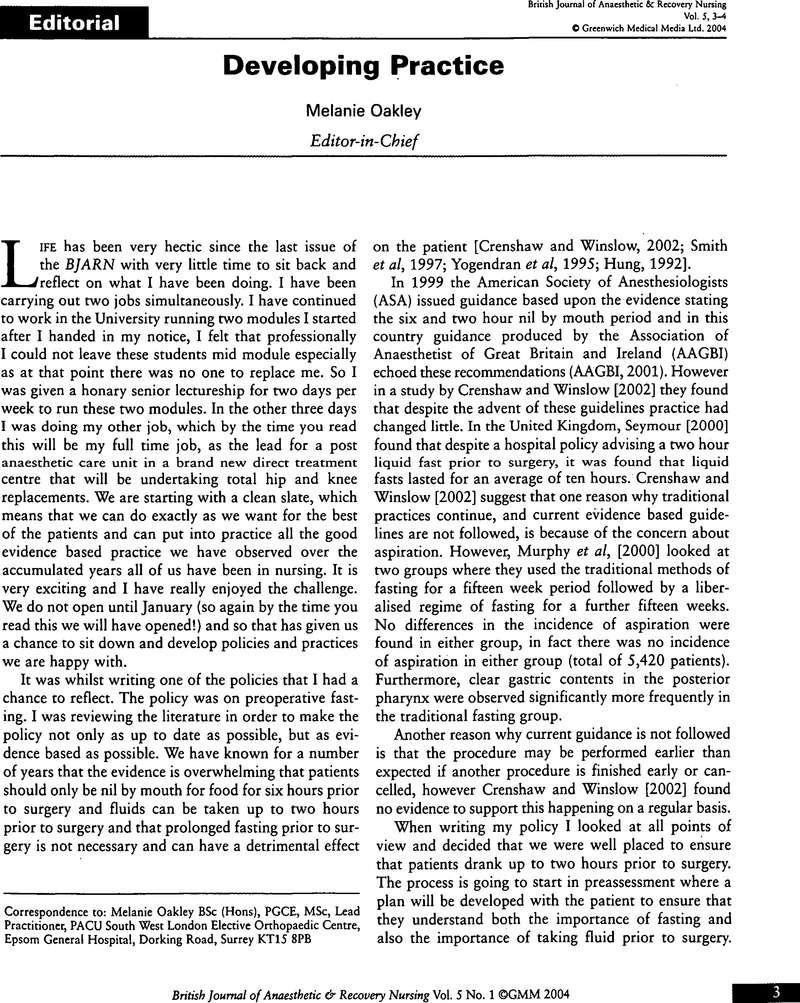No CrossRef data available.
Article contents
Abstract
An abstract is not available for this content so a preview has been provided. As you have access to this content, a full PDF is available via the ‘Save PDF’ action button.

- Type
- Editorial
- Information
- Copyright
- Copyright © British Association of Anaesthetic and Recovery Nursing 2004
References
American Society of Anesthesiologists. Practice guidelines for preoperative fasting and the used of pharmacologic agents to reduce the risk of pulmonary aspiration: Application to healthy patients undergoing elective procedures. A report by the American Society of Anesthesiologist task force on preoperative fasting. Anesthesiology 1999; 90(3): 896–905.CrossRefGoogle Scholar
Association of Anaesthetists of Great Britain and Ireland. Pre-operative Assessment: The Role of the Anaesthetist. London: Association of Anaesthetists of Great Britain and Ireland, 2001.Google Scholar
Crenshaw, JT, Winslow, EH. Preoperative fasting: Old habits die hard Am J Nurs 2002; 102 (5): 36–44.Google Scholar
Murphy, GSAult, ML, Wong HY, Szokol JW. The effect of a new NPO policy on operating room utilization J Clin Anesthesia 2000; 12(1): 48–51.Google Scholar
Smith, AF, Vallance, H, Slater RM. Shorter preoperative fluid fasts reduce postoperative emesis. BMJ 1997; 314 (7092): 1486.Google ScholarPubMed
Yogendran, S, Asokumar, B, Cheng DC, Chung F. A prospective randomized double-blinded study of the effects of intravenous fluid therapy on adverse outcomes on outpatient surgery. Anesthesia Analgesia 1995; 80(4): 682–686.Google Scholar


